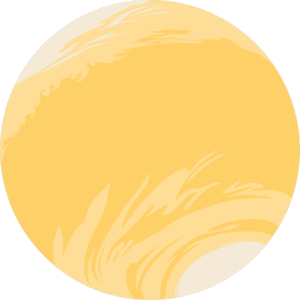The Downlink • Oct 22, 2021
Blurring the lines between imagination and reality
Space Snapshot

What might look like the product of an artist’s imagination is in fact a very real image of the center of the Milky Way galaxy, made using data from NASA's Chandra X-ray Observatory and the MeerKAT radio telescope in South Africa. The layered mosaic translates light at invisible wavelengths into colors that can be seen and analyzed. The whitish stripes emanating from the center of the image are superheated gas and magnetic fields emerging from the massive black hole that lies at the heart of our galaxy. Image credit: NASA et al.
You love space, now take action
This weekly newsletter is your toolkit to learn more about space, share information with your friends and family, and take direct action to support exploration. Anyone can subscribe at planetary.org/connect to receive it as a weekly email.
Mission Briefings


Lunar samples brought back by China’s Chang’e-5 mission reveal new twists in an old mystery. It’s been said that volcanism on the moon probably ended about 2.8 to 2.9 billion years ago. But analysis of basalts brought back to Earth by Chang’e-5 suggests that lunar volcanic activity may have ceased much more recently — about 2 billion years ago. This makes Chang’e-5’s samples the most modern evidence of lunar volcanic activity we have. More details on the study were published in the journal Nature. Pictured: A panoramic view of Chang’e-5’s landing site. Image credit: CNSA/GRAS/NAOC.

NASA’s Lucy mission is off to a bumpy start. It appears that sometime after Lucy launched last week, one of its two solar arrays did not fully unfurl and latch as intended. Despite the challenge, NASA says the spacecraft is “healthy” and that the team remains “optimistic” about Lucy’s mission to the Trojans. According to one of NASA’s Twitter accounts, no course adjustments would happen before December.

Perseverance appears to be back up and running. After a mandatory mini-hiatus due to the Mars solar conjunction, NASA’s newest mission to the Red Planet seems to be returning to normal operations. The proof? This “Fast and Furious”-style time-lapse from the Perseverance rover. A solar conjunction occurs when Mars is on the other side of the Sun, hindering communications with all Mars orbiters and surface missions.

NASA has selected a new gamma-ray telescope to explore the Milky Way. On Oct. 18, the space agency announced the Compton Spectrometer and Imager (COSI), which is expected to launch in 2025. The mission, which was selected as part of NASA’s Astrophysics Explorers Program, will search for gamma rays in order to map out where certain chemicals in the Milky Way formed.
From The Planetary Society


When it comes to space technologies, zanier is better. If an extrasolar object interceptor and self-replicating, self-repairing planetary habitats made of fungus sound like science fiction ideas to you, tune into this week’s Planetary Radio to hear about the surprisingly real projects being discussed at NASA’s Innovative Advanced Concepts (NIAC) Symposium. NIAC specifically funds projects that are unlike any others being pursued across NASA’s many centers and departments. The result: some truly out-of-this-world ideas. Pictured: An artist’s concept of “extreme solar sailing,” one of the many extraordinary ideas at NIAC. Image credit: Artur Davoyan.

Few things capture the imagination like the possibility of life beyond Earth. This is just one of the many reasons why Mars exploration focuses on the search for evidence of past or present life. The European Space Agency and the Russian agency Roscosmos are teaming up to send the next rover to the Martian surface, launching in 2022. Find out what makes the ExoMars 2022 mission unique, and what exciting discoveries it hopes to make.
What's Up

In the predawn sky, Mercury shines low to the eastern horizon. At sunset, look for Venus shining brightly in the western sky. Over to the east, you’ll find bright Jupiter with Saturn to its upper right. Learn more at planetary.org/night-sky.
Wow of the Week

Tackling the very real challenges of space exploration can lead us to some imaginative (and beautiful) creations. This image, part of a poster presented at the 2021 NIAC Symposium, depicts the proposed SWIM (Sensing With Independent Micro-swimmers) technology that would be used to study the oceans hidden beneath the thick, icy crusts of worlds like Jupiter’s moon Europa. The depiction of the layers of ice and the planet beyond show that the majesty and mystery of the proposed project are not lost on the artist. Image credit: Ethan Schaler.
We love to feature space artwork in the Downlink. If you create any kind of space-related art, we invite you to send it to us by replying to any Downlink email or writing to [email protected]. Please let us know in your email if you’re a Planetary Society member!


 Explore Worlds
Explore Worlds Find Life
Find Life Defend Earth
Defend Earth


